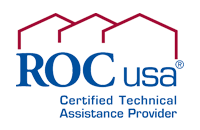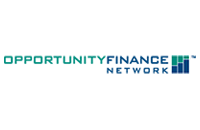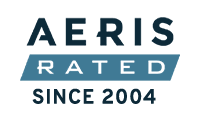
RLOC vs. LOC: What are they, and what's the difference?
By Nick Zotto
The type of loan a ROC chooses to help fill its empty lots should be determined by where it is in its infill process and its plans for the project.
Love them or hate them, acronyms get thrown around often within industries and professions by people who know what they mean and forget that not everyone does.
But there are two acronyms ROC leaders should get to know because they stand for two potentially helpful options for their communities. Either could be just the ticket to increased revenues for your coop.
The New Hampshire Community Loan Fund offers RLOCs and LOCs, loans that share the purpose of helping to put homes on your ROC's empty lots and, in doing so, increasing its revenues. The loan your ROC chooses should be determined by where it is in its infill process and its plans for the project.
RLOC: Revolving Line of Credit
A revolving line of credit works just like a credit card but with a lower interest rate. Your ROC borrows what it needs and, when it has repaid the loan, has access to those funds once again. The Community Loan Fund's RLOC amounts for ROCs can be up to $100,000 and have an annual percentage rate (APR) of 10%.
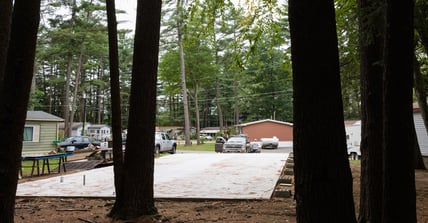 A concrete pad in a cooperative awaits a home.
A concrete pad in a cooperative awaits a home.The loan's term is broken into two distinct repayment periods.
First is the draw period. The Community Loan Fund's RLOC gives your ROC three years to draw funds, repay them, and then redraw as needed. During this time, your co-op is responsible only for repaying the monthly interest on the funds it has drawn from the account.
Next is the repayment period. If at the end of the three-year draw period, your co-op still owes a balance on the loan, that balance is split into equal payments of principal and interest over the next seven years.
Let's see what this might look like:
Your co-op has some empty lots, and some abandoned older homes. Your board has a plan to fill them, but it might take time.
First, your ROC draws $45,000 from your $100,000 RLOC to buy a used home and place it on an empty lot. That leaves $55,000 to use for site prep and other costs, or to start additional projects.
While the home is being sold, your co-op is only responsible for repaying the interest (about $375/month) on the $45,000 it has drawn from the account. Because the co-op isn't paying down the $45,000, it saves money on operating expenses.
Once the home is sold (hopefully for a profit!), the co-op repays the $45,000 and again has $100,000 available for the next project, maybe rehabbing one of the vacant homes!
LOC: Line of Credit
A line of credit is similar to an RLOC but has some distinct differences and specific circumstances in which it would be the best option. With a LOC, a co-op draws what it needs when it needs funds, but it does not "revolve"–the funds aren't automatically available when the loan is repaid.
The Community Loan Fund's LOCs can only be used for a ROC's costs associated with purchasing and installing a new or used home. Amounts can be up to $150,000, with an annual percentage rate (APR) of 5% deferred and a term of one year or the home's sale, whichever comes first.
So, the Community Loan Fund's LOCs offer a lower interest rate (by half!), with no payments required until the term's end, but a shorter term and more restriction on how funds may be used. Because of the lower interest rate and deferred payments, this could be the right fit for your community's infill needs.
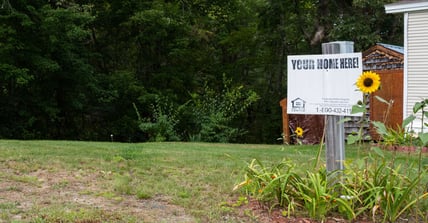 A line of credit might be the best choice if your cooperative is removing an abandoned home.
A line of credit might be the best choice if your cooperative is removing an abandoned home.The loan's term is broken into two distinct repayment periods.
Here's an example that would be perfect for a LOC:
Your co-op has a vacant home in disrepair and a waiting list of folks who would like to move into your community. There is a used home your ROC would like to purchase, but the existing house will have to be demolished or removed.
Your co-op has a $75,000 LOC and uses $15,000 to demolish the old house and prep the site and $35,000 for the replacement home, for a total project cost of $50,000.
While your co-op is waiting for the home to be installed and the new members to move in, it makes NO PAYMENTS! The interest on the money you've borrowed is repaid, with the loan amount, when the home sells or the term ends, whichever comes first.
Recap
Both RLOC and LOC can be fantastic tools to help fill vacant lots or homes in your community. Which you choose depends on the circumstances of your coop's specific situation and needs. The ROC-NH™ team can provide the resources your board or infill committee needs to decide which would best fit your community. Whether your co-op has an open-ended plan to fill multiple sites or a clear project completion date for filling a single lot, an RLOC or LOC can keep funds in your co-op's accounts, save it money on loan payments and help your coop earn more income!
Nick Zotto is a ROC-NH Lender.
ROC-NH™ is a program of the New Hampshire Community Loan Fund, Inc. and a ROC USA® Certified Technical Assistance Provider.
ROC-NH is a registered service mark of ROC USA, LLC.





